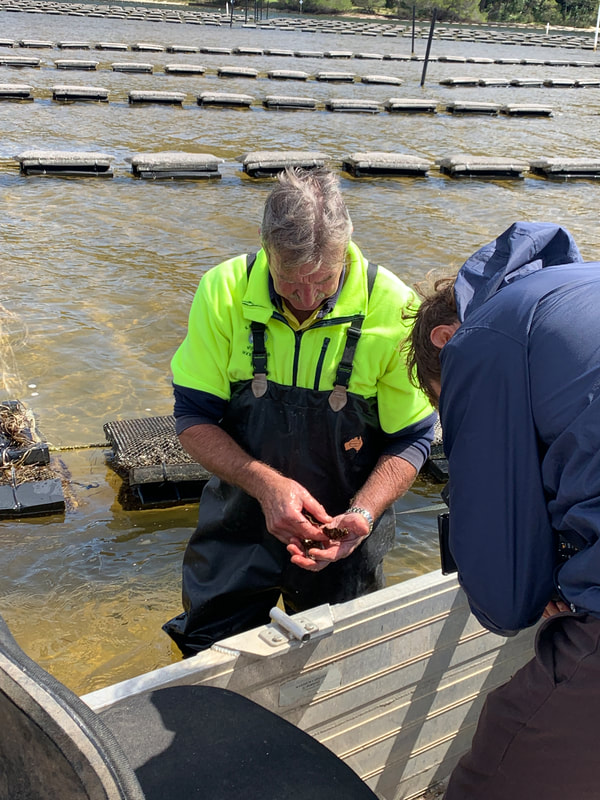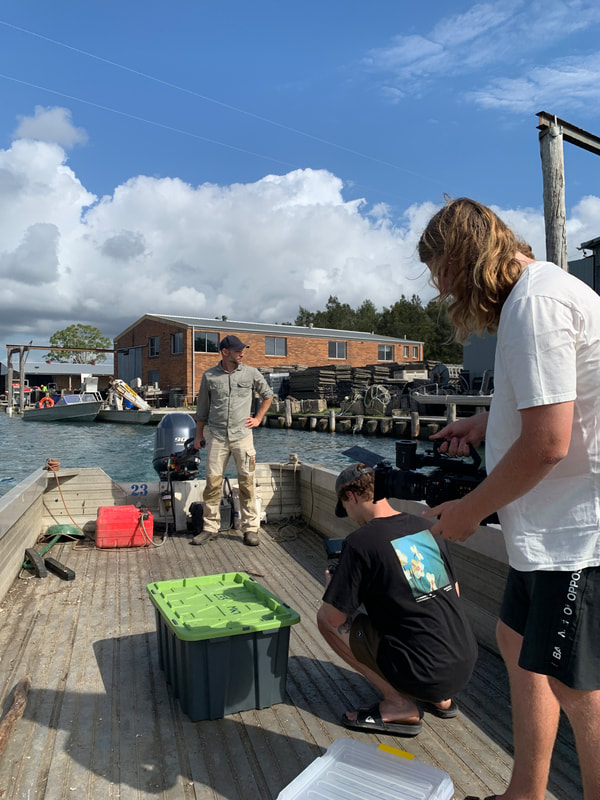A PICTURE PAINTS A THOUSAND WORDS - BEST PRACTICE VIDEO GUIDELINES
Oyster farmers in NSW currently operate across 30 estuaries, producing around 66m oysters every year. Working under the scrutiny of coastal communities, it’s important that oyster farmers understand & strive to operate under evolving best-practice farming standards. This is important to not only build community support, but to maintain and improve the ongoing health & productivity of our valuable coastal waterways. Yet, most best practice guidelines using traditional text are not always easily accessible for all oyster farmers. The goal of this project was to ensure that all oyster farmers in NSW understand what best practice looks like, so that they can adapt their own farming systems if needed, and raise the bar of the whole industry. These improvements in practice will benefit the health and productivity of coastal estuaries and help build the social licence of an industry operating on publicly owned land and water.
This project supported the development of new best-practice industry guidelines and created five short video guidelines on best practice farming, which were professionally produced. Written guidelines were converted into short videos, featuring other oyster farmers setting examples of best practice, removing some of the barriers that oyster farmers face when accessing up-to-date information to enabling the implementation of best-practice.
The topics that were covered were:
Through this project OceanWatch has worked closely with key industry stakeholders, including oyster farmers, NSW Department of Primary Industries and NSW Farmers Association to develop and review film scripts.
The videos are available to all NSW oyster farmers through the NSW Oysters Website and will also be incorporated into the ‘OceanWatch Responsible Oyster Farmer Training Course’. As such, they will be available to all new permit holders in the future and contribute to continued awareness of best practice in oyster farming.
This project is supported by the Department of Agriculture, Water, and the Environment, through funding from the Australian Government's National Landcare Program.
This project supported the development of new best-practice industry guidelines and created five short video guidelines on best practice farming, which were professionally produced. Written guidelines were converted into short videos, featuring other oyster farmers setting examples of best practice, removing some of the barriers that oyster farmers face when accessing up-to-date information to enabling the implementation of best-practice.
The topics that were covered were:
- Biosecurity
- Seagrass Protection
- Good Neighbour Policy
- Waste Management
- Environmental Stewardship
Through this project OceanWatch has worked closely with key industry stakeholders, including oyster farmers, NSW Department of Primary Industries and NSW Farmers Association to develop and review film scripts.
The videos are available to all NSW oyster farmers through the NSW Oysters Website and will also be incorporated into the ‘OceanWatch Responsible Oyster Farmer Training Course’. As such, they will be available to all new permit holders in the future and contribute to continued awareness of best practice in oyster farming.
This project is supported by the Department of Agriculture, Water, and the Environment, through funding from the Australian Government's National Landcare Program.







